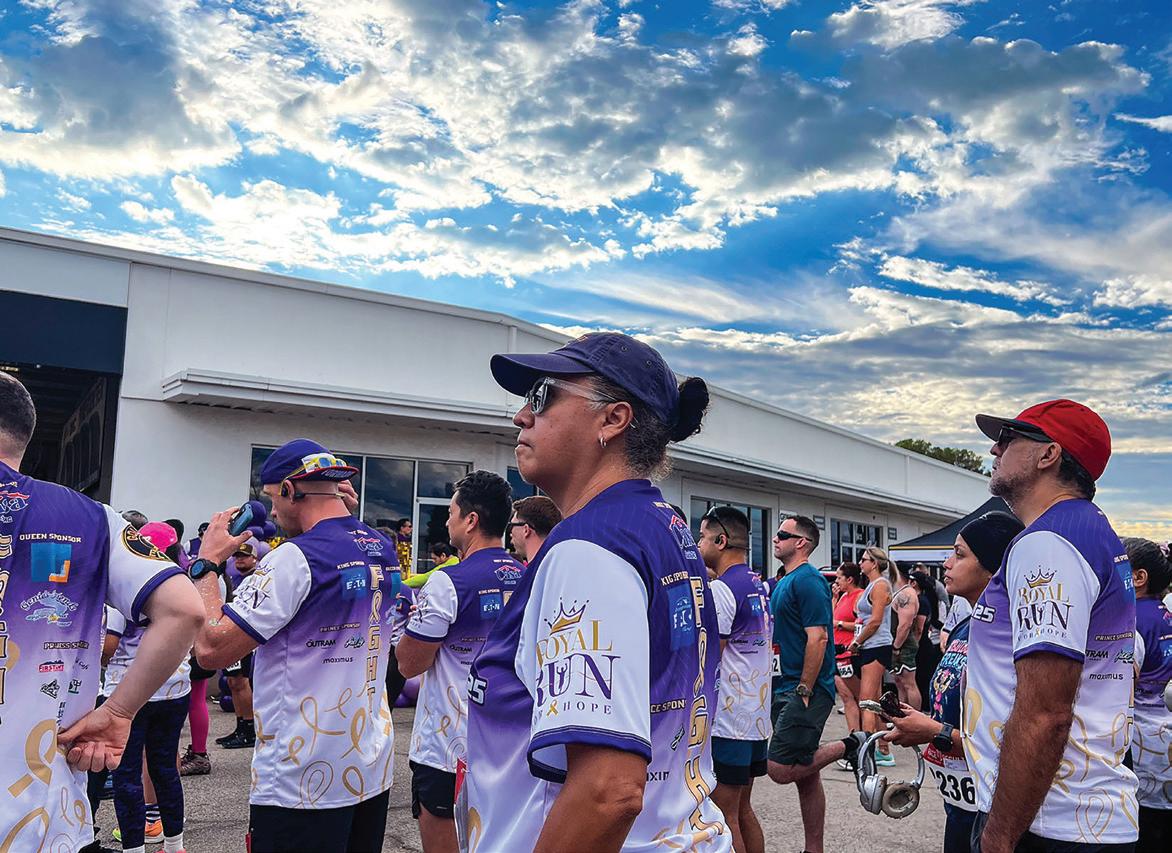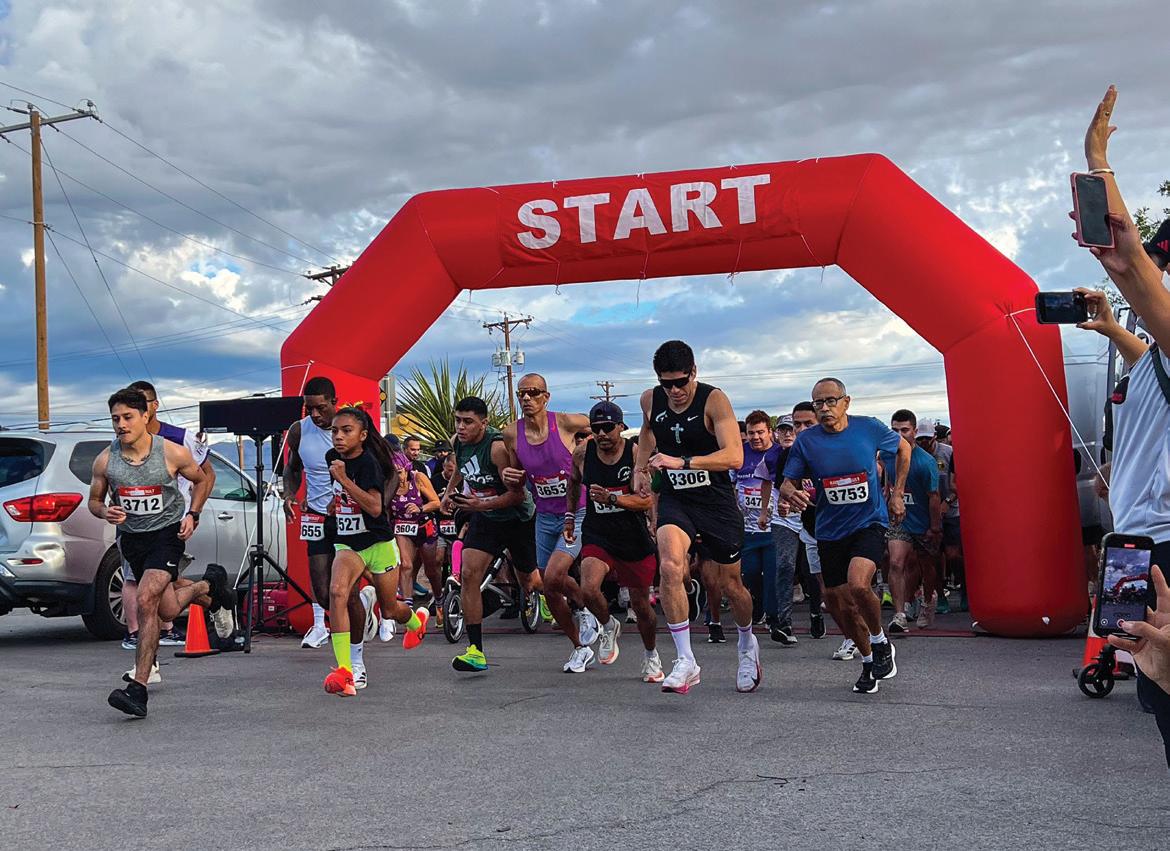THE Creeping between fear and happiness




Fear is a feeling that never strays far, an emotion so intrinsic to the human condition that an entire month is dedicated to engaging with it.


October invites people to confront their fears through haunted attractions, horror films and seasonal traditions.
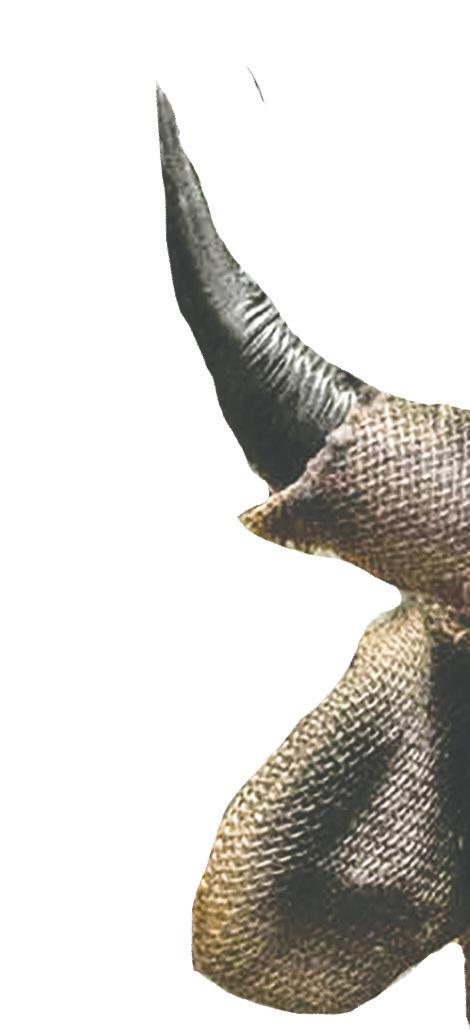

According to the British Psychological Society, our bodies are more than just bystanders in the experience of fear; they’re willing coconspirators. When fear strikes, adrenaline kicks in but lurking just beneath the surface are the brain’s own happy chemicals, like dopamine and endorphins. This unlikely partnership reveals that fear and happiness are far more intertwined than one might think, turning moments of terror into unexpected thrills.
October is a month of carefully curated fear. With decorations draped in cobwebs and themed events designed to thrill, there’s an immersive quality that pulls us into a world of spooky enchantment. Yet, beneath the surface of the scares lies a suspension of actual danger — a crafted experience built for thrill rather than harm. Every creaking door and flickering candle is part of a deliberate design, a




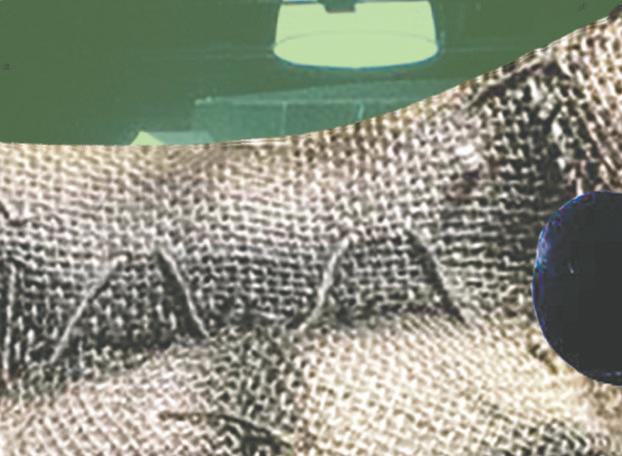

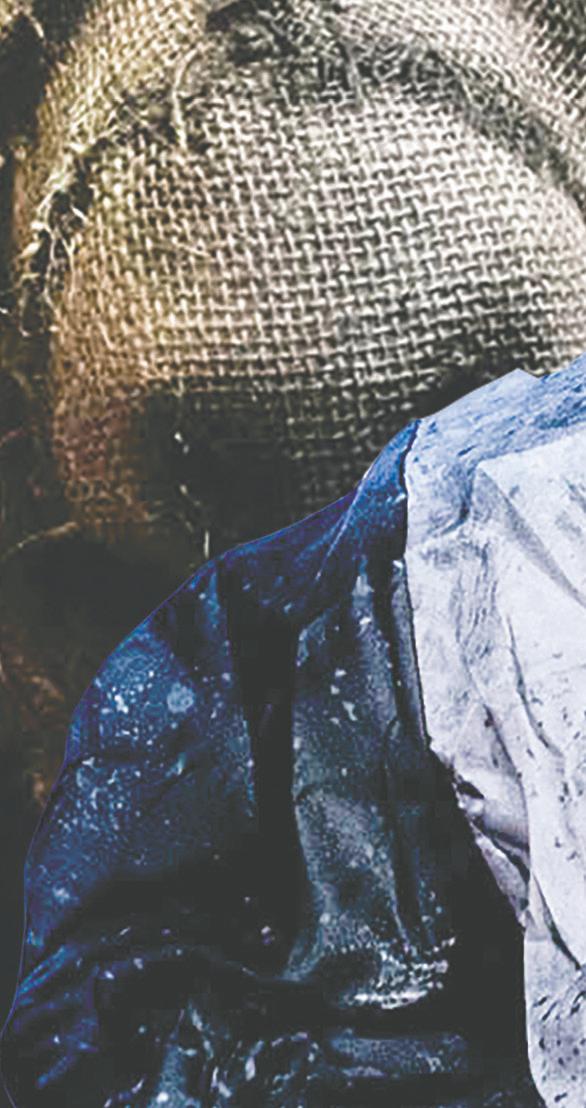
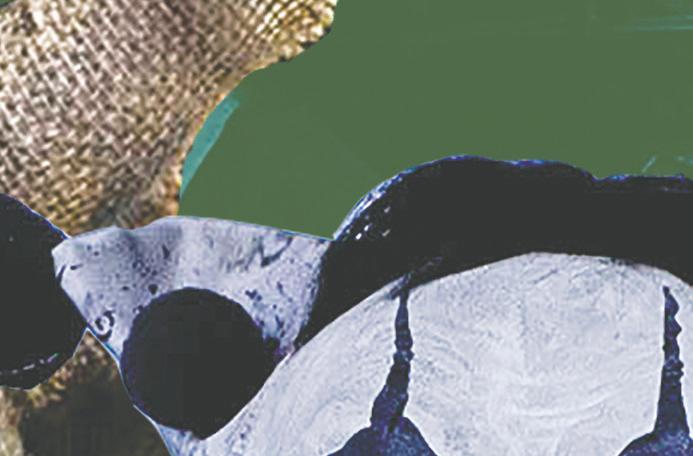
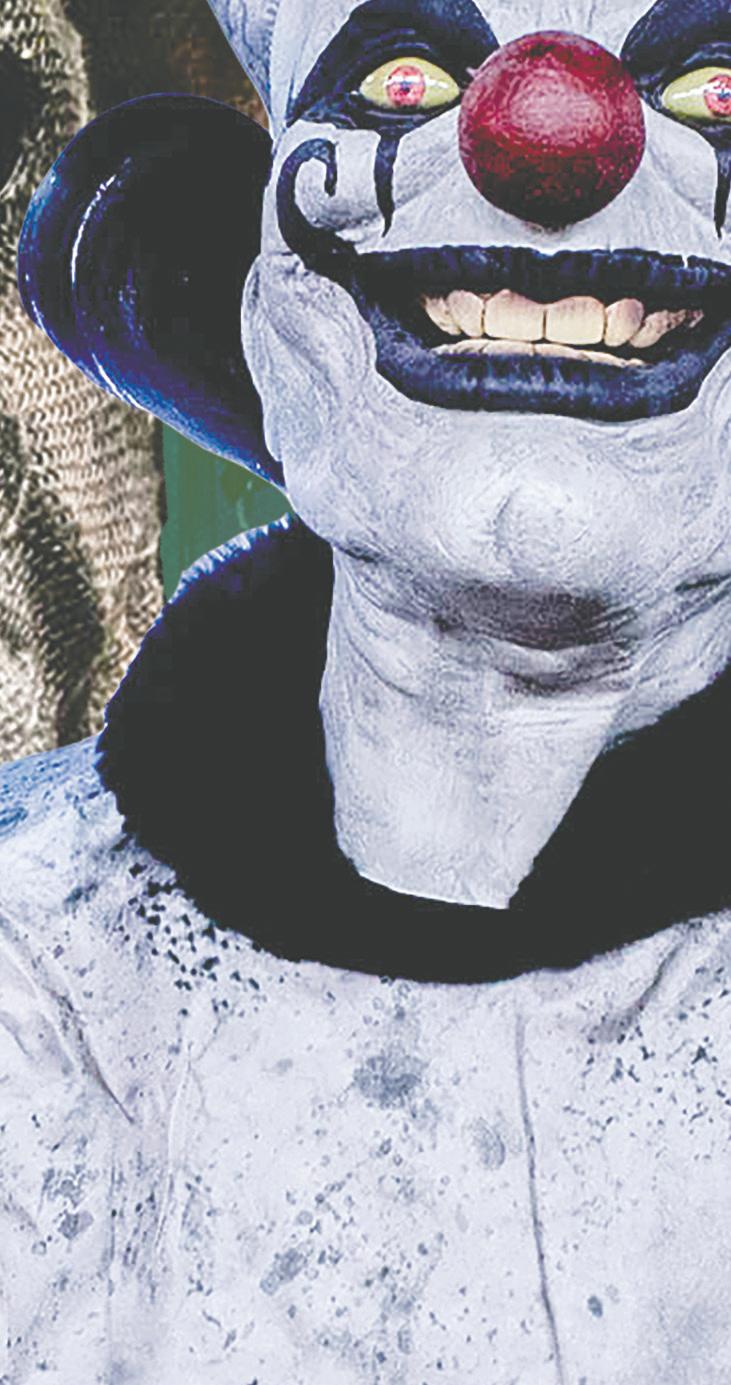





touch of human intervention that conjures up a sense of fear with the promise of fun.
One of the key pillars of this curated experience is Spirit Halloween, a seasonal retailer where customers don’t just shop for costumes, but also for scares. With aisles stocked full of ghoulish decor, creepy props and eerie sound effects, Spirit Halloween transforms fear into a consumer experience, allowing visitors to browse and select their own personalized fright fest.
Alondra Coronado, a Spirit Halloween associate of two years, has been a witness to the enduring attraction we have to fear.


“The animatronics that jump at you, those are the ones that everybody wants,” Coronado said. For many, Spirit Halloween serves as a tangible segue into the macabre, a physical space where fear is both contained and consumed. Amid aisles of animatronics, eerie props, haunting décor, and wicked costumes, visitors can touch, select and curate their own experiences of fright, turning the intangible thrill of fear into something concrete and controllable.
“Scream, Terrifier, and the Jumping Scarecrow are some of the popular bought stuff. It takes our fear and instead of hiding away from it, it makes it fun and shows that being scared is not always a bad thing,” Coronado said.
Beyond haunted houses and seasonal storefronts, fear finds another home on screen. In film, we chase scares with the comfort of distance, immersed in suspense, but always safe behind the fourth wall. It’s fear in its most cinematic form:

Evelyn Palma, editor-in-chief
EVELYN PALMA B Y
EDITOR-IN-CHIEF
THE PROSPECTOR
In late May, I received an email in my inbox that sent me into complete disbelief. It read, “Dear Evelyn, Congratulations! The Student Media and Publications (SMP) Committee has selected you for the Editorin-Chief (EIC) positions of The Prospector for the summer and fall semesters…Your leadership at SMP and on campus do not go unnoticed. This speaks very well of your character.”
I was in shock, excitement–a total whirlwind of emotions! I remember being on the phone with my boyfriend, Isaac, and saying, “Can you believe it?” His response was simple yet meant a lot to me, “Of course I can believe it.”
When I started at The Prospector in January, I spent the semester feeling I was practically invisible. I knew I cared a lot about putting good work out and was thankful for the opportunity to grow as a journalist, but it would be a lie to say I felt I was fitting in. As the news spread of my new role as EIC, I was nervous about what people’s responses would be and if they’d even want to work under my leadership.

Up until now, I have spent a wonderful summer with my brand-new editor team – a group that will hold a special place in my heart.
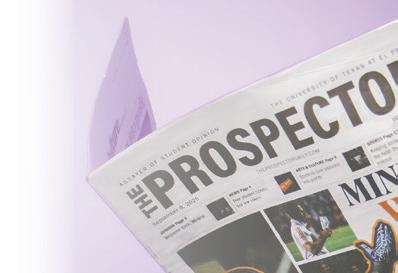
We spent our days getting to know each other on different levels, sharing laughs, long work sessions and moments that made the newsroom feel more like home.


As the fall semester snuck up behind us, I conducted many interviews and expanded our team to over 20 people.
I have had the privilege to speak to every one of them, watching them take on new opportunities with courage, even when they seem intimidating.





I have felt such overwhelming support from my peers, bosses, family and friends that I would never dare take for granted.
I have taken many leadership roles throughout my life, and thanks to that I have learned that leadership doesn’t happen alone. It is built on the people who remind you of your
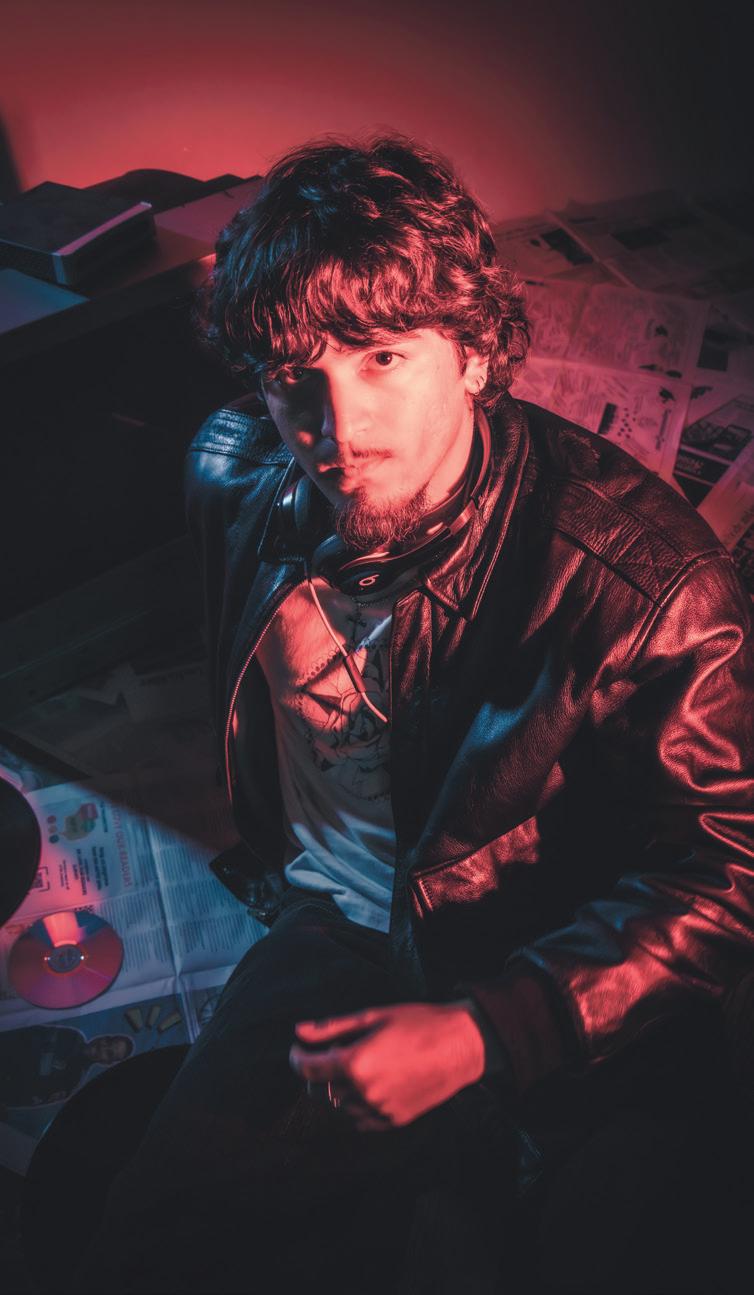
Web/Copy Editor
Sebastian Perez-Navarro, Multimedia Editor
Kahri Reyes, Audience & Engagement Editor Mia Colmenero, Layout Editor
ADVERTISING STAFF
Adrienne Garcia, Account Executive Elias Segura, Advertising Videographer STAFF
KAHRI REYES B Y
AUDIENCE & ENGAGEMENT THE PROSPECTOR



Sebastian, our multimedia editor, was the first person to make me feel welcome at The Prospector. He has always uplifted my spirits and makes me feel truly welcome. Kristian, our sports editor, has been like a rock, constantly reminding me of his confidence in me.
Kahri’s been a ray of sunshine and she is always ready for a laugh or vent session with... read MORE at theprospectordaily.
IZIAH MORENO B Y
PHOTO EDITOR THE PROSPECTOR
If you told 17-year-old me that one day that I’d have the photo editor spot on lock for these publications that I was thinking about joining, I would have been like “LOL you’re funny.” But here I am, 20 and five semesters deep into The Prospector (and Minero Magazine, shout out Minero) and I’m writing my second editor intro as the photo editor.
I’ve seen faces come and go. I’ve seen The Prospector and Minero Magazine at its highs and some lesson filled lows. I’ve had my fair share of my own highs and lows on the way too, but through it all I still ask myself one thing: What is
Vivien Noe, Staff Reporter
Jewel Ocampo, Staff
Alan Acosta, Staff Photographer
Nate Flores, Staff Photographer
ADMINISTRATION
Veronica Gonzalez, Director
Crystal Hinga, Assistant Director Isabel Castillo, Accounting Specialist
Amy Ontiveros-Bocanegra, Administrative Assistant
CONTRIBUTORS
Adrian Gonzalez
Aylin Montanez
Aylinne Morales
Brisa Silva
Damaris Flores
Dustin Perez
Erick Olguin
Jazmine Gracia
Lesly Chavez
Sadie Briones
Tori Adler
keeping me here?




















The entirety of my journey with The Prospector has been a continuous lesson filled with its fair share of growing pains, and no, I don’t mean physically, as I am still five feet tall. This experience has been more than a job; it has molded me in ways that I didn’t know I was capable of. In order to fully appreciate this sentiment, I need to start from the beginning.




When I first received my job offer from The Prospector, I was overwhelmed by the constant feeling or sense that I didn’t belong. This pertained to my lack of confidence in my work and myself. It felt like I was stuck in a tub of imposter syndrome, and I was drowning in it. I wasn’t able to comprehend why I was chosen to work alongside such incredible, talented and smart individuals.















On my first day, I was completely lost. I wasn’t familiar with the complex world of journalism. As overwhelmed as I was, I made the wrong mistake of vocalizing my self-doubt.
The first lesson you learn at The Prospector is to never talk down upon yourself or say, “We aren’t capable of something.” While it may feel impossible at times, the reality of it all is that the team sees potential in you that you may not have recognized just yet. They genuinely believe in you and constantly push you to grow within your craft. Working here has presented me with such amazing opportunities and instances where I am pushed to step outside of my comfort zone. For the longest time, I dreaded the idea of being in front of a camera. As a graphic designer, I was used to working behind the screen, not in front of it. The thought of approaching strangers with a tiny microphone and asking them questions was terrifying. But with continued practice, I grew to love it. From that fear, I have been able to create a social... read MORE at theprospectordaily.com
That answer changes every semester. Sometimes it’s the people, sometimes it’s the crazy creative freedom, and other times it’s the fact that I’ve grown to be extremely comfortable and familiar with this space. Through my different eras in student media, there’s one thing that hasn’t changed, and it’s the love that I have for this place. For the stories I tell through my pictures, the stress filled deadlines and the joy of when everything sort of just falls right into place.
I still think it’s the weirdest feeling seeing my work published and out in the world of UTEP with my name attached to it. I’ve always had a bad habit of hating the work I’m
producing in the moment, but when it’s out I’m able to grasp the reality of what I’m doing and always end up thinking “Damn, I did that.”
I think now I’m able to confidently say that I am proud of myself and how far I’ve come.
I still obviously have my faults and much more room to grow, but it brings me joy looking back at where I started from.
Sometimes it’s easy for me to forget that people are actually out there reading and watching what we create here. Whenever someone tells me “I saw your photo,” or “I read your story,” it hits me with such a sweet feeling inside.
So, if you’re reading this right now, thank you. Thank you for giving us your time, your
attention. It gives us a reason to keep enjoying doing what we do, so for the third time, thank you. I’d probably be back in the nursing field crying at an exam right now if people like you didn’t believe in what us students can do.
I’m excited to see what the future holds for me. I’ve definitely been tested, but it’s the sweetest challenge once I overcome it all. It’s the type of challenge that pushes you to be an overall better person even outside of a career.
Maybe I will be updating you guys sometime again in the future? Who knows…
In the meantime, hashtag stay tuned.
Iziah Moreno is the photo editor and may be reached iamorenogavald@miners.utep.edu
As summer has begun to fade away, Sept. 22 officially marked the start of the fall season. Leaves change color and chilly mornings become chilly afternoons, and as temperatures drop, deadlines get closer and so does the panic of the fall semester.
Just like the fall semester is the beginning of a new academic year, to many, college is the beginning of adulthood, considered the time where worries go from childlike to real-life troubles.
This means the scary part of October isn’t just Halloween, but also the deadlines of all those assignments that never seem to end. Thanksgiving is the day where students are thankful if their Blackboard grades are in any color other than red.
So, how are The University of Texas El Paso’s (UTEP’s) students holding up through these spooky times of the fall semester?
Melina Holguin, first year biomedical sciences major and Terry Scholar, describes her semester so far as surprising.
“It was a big shift from high school to university. It’s full of lots of fun experiences but also hard realizations,” Holguin said.
It‘s true that a new semester can feel intimidating for lots of
students despite their classification. However, it is important to remember there’s no need to handle everything alone.
“Something I’ve learned to do is take advice from others who have been in my position before,” Holguin said. “Seeking mentorship has really helped me figure out what I need to do to get to where I want to be.”
Another huge challenge students face is handling a routine that changes like the El Paso weather; in the morning cool and relaxed, but at 2 p.m. the sun is out and there’s nowhere to hide from the heat of the moment.
A fun activity many people enjoy
when fall arrives, even though it is still 90 degrees outside, is going to coffee shops and trying anything pumpkin spice related. Pumpkin spice is everywhere, but how can routine be spiced up when students are caught up in a never-ending to-do list?
Edgar Lerma, a freshman Terry Scholar pursuing a career in mechanical engineering, knows how adapting to routine can be quite an endeavor.
“Sometimes I struggle with deadlines,” Lerma said, “So what I’ve done is I sit down every week, look at my Blackboard, emails and any other deadlines and put together a digital schedule. Keeping track of yourself and what you’re supposed to do is what matters.”
Celeste Esparza, a junior student... read MORE at theprospectordaily.com
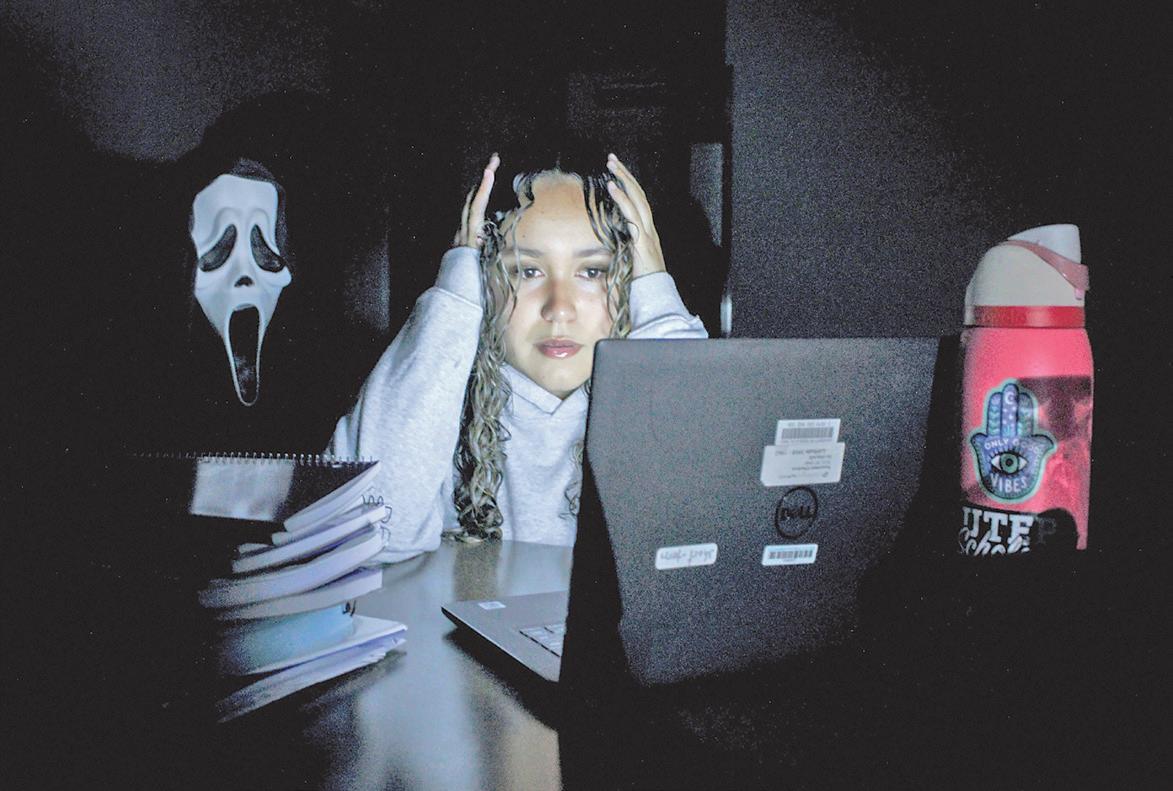

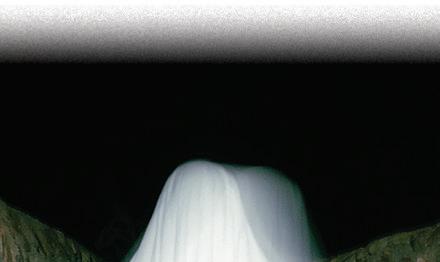
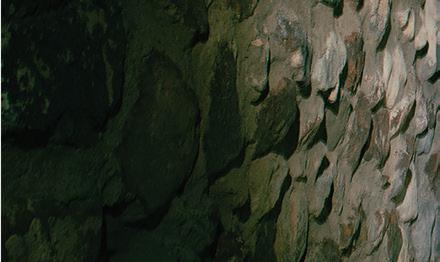



Spooky season has arrived, and with it, ghost stories creep back into conversation.
From haunted dolls to La Llorona, the supernatural lingers in different spaces. While some students laugh at the idea, others swear they’ve witnessed the unexplainable, and most, me included, fall somewhere in between.
I may not believe every paranormal tale, but my own experiences have left me open to the possibility that some things can’t be explained away.
John Bentancourt, a computer science major, said his strange encounters have left him open to the idea of the supernatural.
“There’s a bunch of stuff we can’t explain, so I couldn’t see why [the supernatural] wouldn’t be one of those things. [I’ve seen] just the normal stuff, like stuff moving,
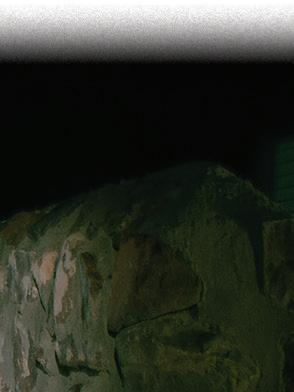
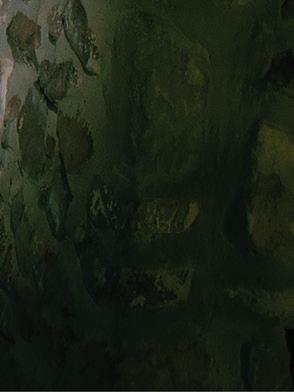
sounds you know, little voices sometimes. But it could just be schizophrenia,” Bentancourt joked. Not every story shared came with a punchline as Valery Ramirez, a junior psychology major, said her belief in the supernatural stems from movies inspired by true events and one especially unsettling childhood memory.
“When I was little, I used to have a clown doll. It had a little key on the back of it, so, when you would turn it, it would make a sound. But one time it made the sound on its own,” Ramirez said.
Looking back, Ramirez laughed at the memory and recalled how she hadn’t even hesitated before tossing the potentially haunted doll out of her house.
For some students, the belief in the supernatural comes less from a single scare and more from how they interpret the world around...





Evelyn Palma, editor-in-chief
As the Halloween season fills feeds with parties, costumes and fall festivities, FOMO, or fear of missing out, becomes a pervasive sentiment on social media. However, FOMO has led to further repercussions, as many posts elicit more than an “Oh, I wish I was

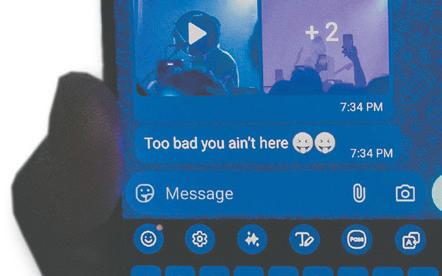



there too” response from users; they generate the consuming thoughts of “If only I had that” and “If only I were like that.”
In “Fear of Missing Out (FoMo): A Current Review,” researchers Fuat Tanhan1, Halil İbrahim Özok1 and Volkan Tayiz1define the fear of missing out as, “the constant desire to follow the exciting and glorious lives of others through the internet and a state of constant anxiety about it.”
While social media algorithms normalize constant personal inadequacy due to the comparisontrap content that is pushed to augment user engagement, they may not be the root cause of FOMO’s psychological effects, such as the belief that one’s life isn’t “good enough.”
FOMO is also the byproduct of posting culture, which revolves around the subconscious competition for who is living a more fulfilling life.
Many people tend to compare the negative aspects of their own lives with the surface-level, pleasant aspects of others’ lives, even when that is all they ever share online.
With this embedded propensity for people to compare themselves to others, FOMO serves as a reminder of what one doesn’t possess– a feeling that is captured in Olivia Rodrigo’s song “Jealousy, Jealousy”: “I want to be you so bad, and I don’t even know you; all I see is what I should be.”
“The Psychology Behind FOMO” by the Cerebral organization states, “When you’re worried about what you’re missing, your mind can spiral into thoughts of inadequacy or fear that you’re not measuring up to others. This anxiety can become chronic, making it difficult to feel at ease in your own life.”
Daniela Chavez is bombarded with posts on TikTok that drive her to constantly covet.
“People who are really close to their family, and they upload videos like ‚ ‘I went on a trip with my family’ or, ‘I came to a family dinner,’ something I wish I could have, but I don’t,” Chavez said. Chavez also associates the ability to live one’s best life with having a large number of friends, which she says she lacks.
“I tend to really have ‘what ifs’

regarding friends because I used to have a really big friend group in high school, but once I got to college, everything changed,” Chavez said.
Consuming the content featuring seemingly perfect families and friend groups having fun and traveling together reinforces her perception that her life is boring when set sideby-side with those who seem to have a better social life. Chavez’s constant worry that everybody is having more gratifying experiences than she is leads her to believe that she has fallen behind everyone else.
FOMO and social media can fuel
Genio is an app for students with notetaking accommodations that records and transcribes lectures, lets users customize notes, build study skills, and access tools that support academic success.
Students interested in using Genio must be registered with CASS and approved for this accommodation.
CASS IS AT YOUR FINGERTIPS WITH
the widespread need to partake in what everyone else is doing. Many objectives tend to be set based on what the rest of society is accomplishing. As a result, users’ self-esteem may vary depending on how near they are to achieving their expectations of a good life.
Influencers, such as Becca Bloom, who appear to have their future secure and regularly post envy-inducing content, intensify the effects of FOMO as they successfully convince people that there is such a thing... read MORE at theprospectordaily.com
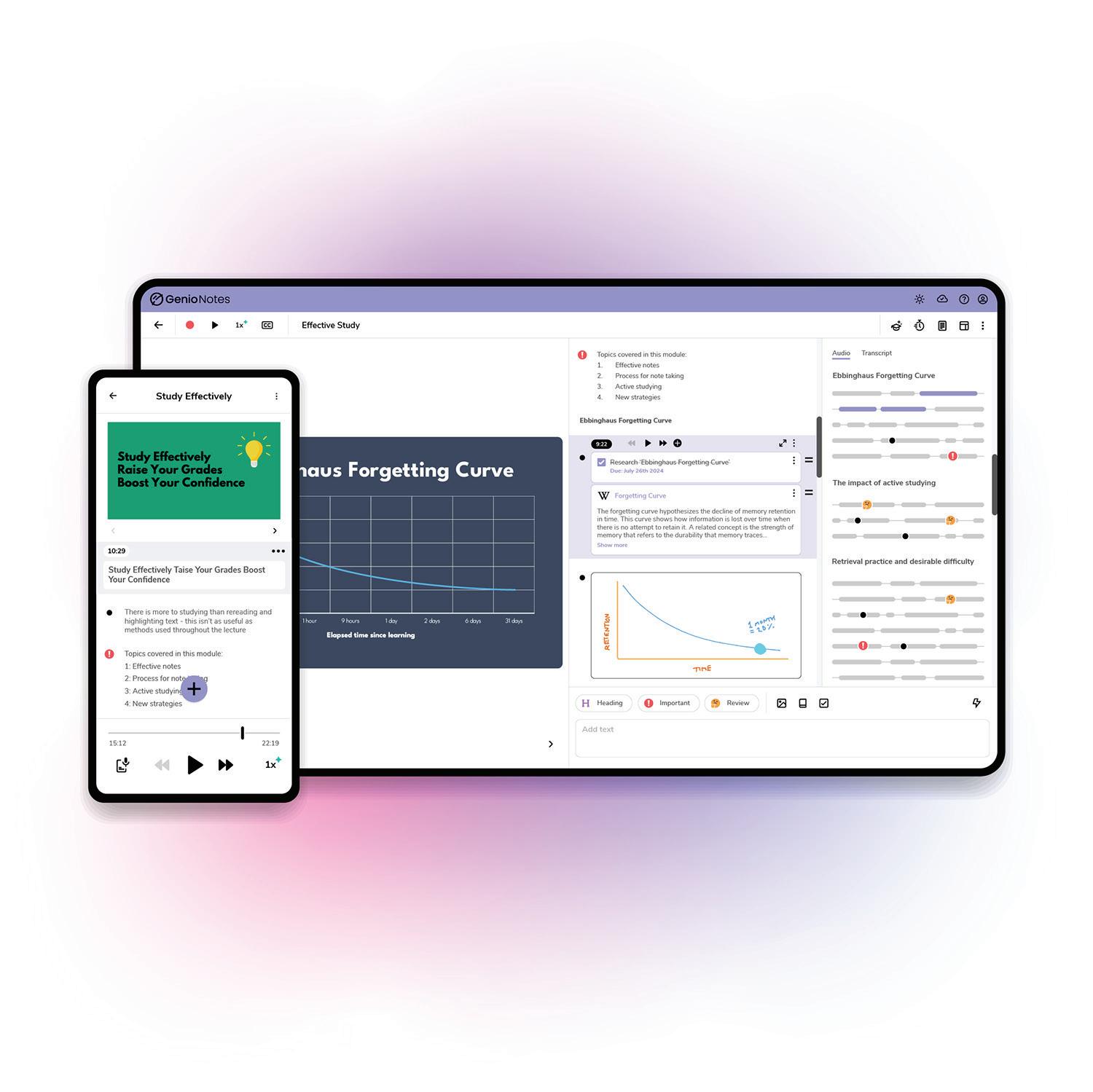




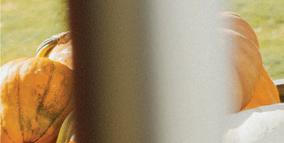








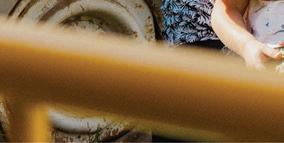




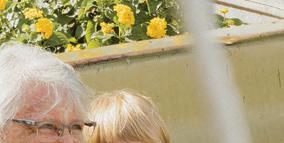





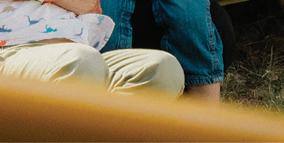




do in the fall for families and kids, and they make it really affordable especially with this weekend being 50% off,” Migowski said. “It was a lot of fun for kids; there’s a lot to do out here.”
Daniela Pérez, a mother attending the maze with her children and friends, is a yearly attendee and enjoys the traditional pumpkin patch visit.
“Me gusta mucho, cada año venimos con los niños y la verdad que nos diveritmos bastante,” Perez said. “Venimos incluso varias veces durante la temporada y yo veo que es igual cada año pero la comida es muy rica y las actividades son divertidas.”
to enjoy.

“Having a place where people can have a place to escape and hang out with their families, there aren’t that many kid friendly, family friendly places for everybody, so I think that is always a big focus for us,”








Cuellar said. “This is a place where you can come with your abuelita, your nieces and nephews, it’s for everyone to enjoy.”




Nostalgia is a key factor for most attendees at La Union Maze and as families continue to frequent the event, tradition ensues. La Union Maze has many activities for families to enjoy and is open to the public until Nov. 2.















While fall traditions in El Paso can be difficult to come across as the city doesn’t get a big feel of the fall aesthetic,” but there is always one place El Pasoans can look forward to, La Union Maze.
Opening for their 26th season, La Union Maze is a family friendly experience, with a pumpkin patch, slides, playgrounds, pedal cars, a mini flower maze, animal farms and pig races.
Omar Cuellar, a manager for La Union Maze, works diligently making sure their team can meet the expectations of every visitor waiting for the maze to open for the season.
“Every year we try and grow more and more so we do see that increase and we do our best to accommodate it because we know what this place means to people, and we‘re excited that it’s a place that people can come visit, it’s different from anywhere else here on the border,” Cuellar said. “But we try to make it super family friendly for everybody and we do get a lot of visitors, but we try to meet that by growing ourselves.”
With discounts like their opening weekend’s military and first responder’s discount, Brittainy Migowski and her daughter were able to enter with friends at an affordable price for them.
“I think it’s something fun to
This year, La Union was able to achieve the making of their “Sesame Street” themed maze, working with “The MAiZE inc.”, an organization of corn mazes around the United States.
“I was really excited when we found out that our theme was Sesame Street, I think we all grew up on Plaza Sésamo, so when they told us I was beyond excited,” Cuellar said. “The design is very intricate, so I was feeling excited. Very nostalgic.”
Creating a fun and family friendly environment is a goal for the employees at La Union, as they even have a staff member dressed up in a corn cob costume to MC the pig races for the kids and adults


JEWEL OCAMPO
In 2027 astronauts will attempt to land on the moon for the first time in more than 50 years and The University of Texas at El Paso (UTEP) will have had a hand in guiding them there.
Jose Hurtado, Ph.D., a professor of Earth, Environmental and Resource Sciences, received a NASA grant in late 2024 to join the Lunar Mapping Program (LMAP), a U.S. Geological Survey initiative. He will also work with the teams preparing for the Artemis II and Artemis III missions, the latter set to mark the first human landing on the moon’s South Pole. For Hurtado, the chance is both a professional milestone and childhood dream.
“I’m honored and proud that I can be a small part of that,” Hurtado said. “Doing something as grand as putting human beings on the moon if I can’t walk on the moon myself this is the next best thing.”
NASA’s Artemis program is the first effort to send astronauts to the moon since Apollo 17 in 1972. Artemis II, scheduled for early 2026, will be the first crewed mission sending four astronauts, including the first woman and first person of color to travel to the moon. They will be sent into orbit
before returning to Earth. Artemis III, planned for 2027, will attempt the first human landing at the lunar South Pole.
Hurtado joined the ten-man Artemis II science team this year, where his role focuses on operations and communication.
“In the science evaluation room, I will be the one on the radio loop in mission control, talking to flight controllers,” Hurtado said. “It’s a pretty important job. It’s going to take a lot of understanding of not just the science, but also the mission operations making sure the lines of communication are open and clear.”
With Artemis III, Hurtado will take on a more science-focused role during the two-week mission. He and his colleagues will evaluate potential landing sites, create detailed geologic maps of the Moon and help plan surface activities.
Once the mission launches, Hurtado and his team will be stationed at Mission Control in Houston, monitoring the astronauts’ progress through live video, radio and incoming data.
Even after the spacecraft completes its mission, Hurtado’s team’s work continues on earth.
“My team is responsible for putting together the preliminary science reports and examinations
of the samples they bring back,” Hurtado said.
At the heart of Artemis III are scientific questions that could reshape the understanding of the moon and solar system. Scientists hope to uncover clues about the moon’s origins, study its craters, investigate how a planetary surface evolves without an atmosphere, and examine ice deposits at the south pole as a potential resource.
Hurtado’s expertise is grounded in his work with LMAP as the project tasked the team with producing detailed maps of the South Pole and testing new methods to guide future moon exploration.
“The interest there was to develop new methodologies and ways of thinking about making geological maps that might be applicable for exploration of the South Pole area of the moon,” Hurtado said.
For Hurtado, the missions are not just about discovery but about sharing the excitement with students and the broader community. Two of his doctoral students already have roles in Artemis III preparation and simulations, and he said he plans to bring lessons from those missions into his courses and outreach.
“I want to bring this excitement of exploration to the students here,” Hurtado said. “It could be a big motivator for getting [the students] into science or engineering, especially geo science.”
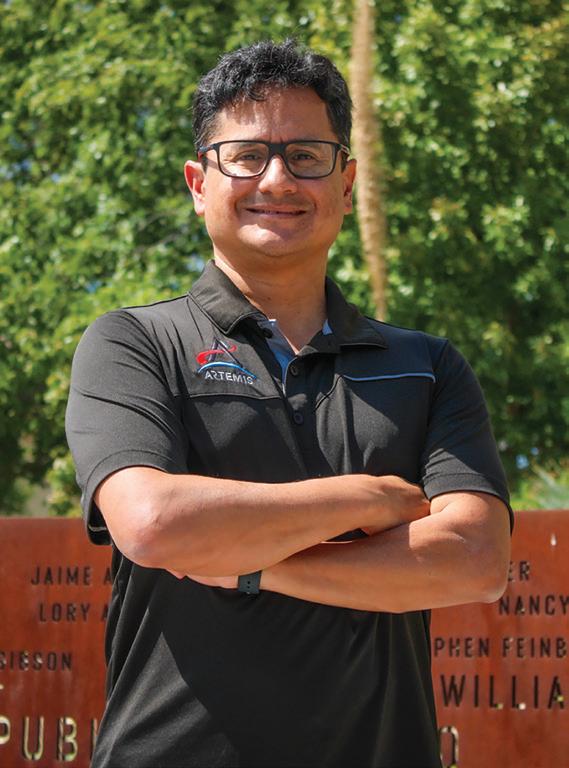
ose Hurtado, Ph.D., a professor of Earth, Environmental and Resource Sciences at UTEP , received a NASA grant to join the Lunar Mapping Program.
by Lesly Chavez/The Prospector
Hurtado also envisions hosting watch parties during the Artemis missions to help students connect with the program.
“I hope that Artemis and the names of these astronauts and the places they‘re going to go to become sort of household talking points as we get closer to these missions,” Hurtado said.
While Hurtado’s contributions may take place on earth, their impact will reach as far as the lunar surface, and as close as his own classroom, as he helps UTEP become a part of the next chapter of space exploration.
Jewel Ocampo is a staff reporter and may be reached at Jnocampo@miners.utep.edu
SPOOKY from cover curated, contained and yet deeply felt. Horror becomes a mirror and a sandbox, letting people explore danger without ever stepping in it.
For Diana Hernandez, a student studying advertising and graphic design, fear is in a soundtrack, a carefully constructed layer that often recedes into the background, yet acts as a powerful, underappreciated conduit for how fear is felt and experienced.
“I feel music and sound design is key. When it comes to horror films, although it’s easy to look past, music and sound design make the experience for me,” Hernandez said. “I am immersed once I hear strings start playing ominous music.”
The television acts as a portal into frights. Behind its screen, danger feels distant, contained and allows us to dabble in terror without any real risk. It’s a controlled portal where fear is packaged, presented and suspended, giving us permission to lean into fright while knowing we’re always just a click away from safety.
“Films and other horror media help us evaluate how we would act in that situation. Those moments in movies when we say, ‘Don’t open the door!’ help us to think about how we would react,” Hernandez said. “It’s like exposure therapy.” Fear sometimes isn’t about instant gratification; it’s a slow burn, a carefully crafted relationship that sometimes revels in anticipation. For Megan Smith, studying... read MORE at theprospectordaily.com
OPEN AN ACCOUNT TO ENTER RAFFLE
WANT MORE ENTRIES? REFER US WITHIN THE APP!


Abby Pedroza, editor










After the success of the first edition of the “Death by Denim” fashion show last year, designer and founder of Junk Approved, Janace Walker, decided to bring back the show for a second round. On Oct. 10, designers, models, press and an audience will all be united at Concordia Cemetery to watch the “Rebirth edition” of the show.
The concept of a fashion show in a cemetery might seem unusual to some but the artistic concept was accepted with open arms. The event’s popularity led to its return this year, with tickets selling out after they went on sale June 1.
While Walker kept the challenge for herself and six other designers to design looks made of at least 90% denim, her artistic vision for the show this time around would be different.
“Denim can be upcycled and recycled into anything. Nine times out of 10 we have a favorite pair of jeans, and they can tear and grow with us,” Walker said. “We can think these are old things now, but they can be renewed and regenerated and still be our favorite thing.”
Using denim to create something unusual also served as a representation of the Junk Approved style. As an artist, Walker describes herself as “avant-garde” and “abstract.”
“I like to design costumes more than everyday wear. I am really into over-the-top designs, which is a difference here in El Paso.”
Walker said.
Walker is originally from North Carolina and has found inspiration in her new home of El Paso and its Hispanic culture, so much so that one of the main inspirations of the show was Día de Los Muertos.
Walker also took inspiration from fashion designers like Thierry Mugler and Alexander McQueen, both known for blending high fashion with theatrical, imaginative runways. The story that Walker hopes to tell with this season’s looks is one full of mystery and nostalgia.
When creating each look, Walker chose to dress the models in clothes that highlighted their favorite features, incorporating elements like patchwork and colors to match each model’s personality.
“I try to not do the same thing for every model, especially for this show because I want to represent souls,” Walker said. “We’re all different, we’re all unique. So, every look is going to be different than the one before.”


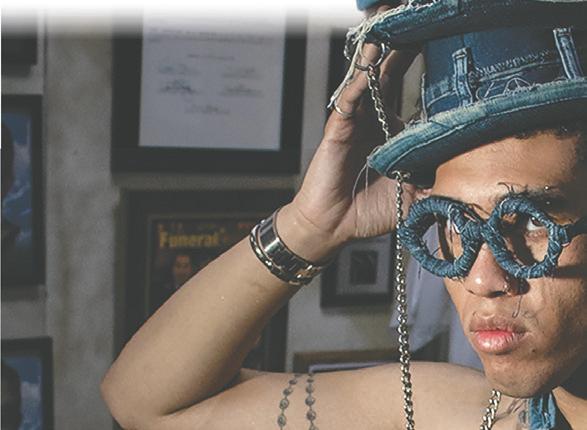




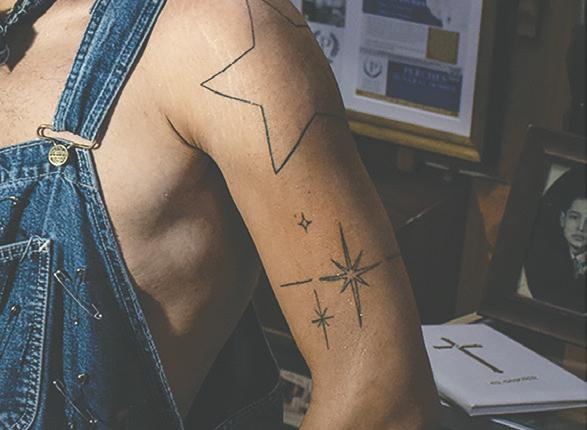
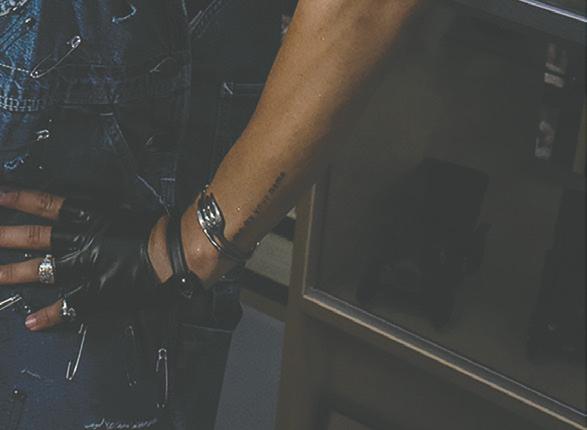
“There’s going to be different phases, from childhood, to adolescence, all the way to adulthood, then death and finally to rebirth,” Walker said. “Each designer’s collection is going to symbolize what that part of life is to them.”
Walker’s choice to feature denim gave the material a new meaning of flesh, representing how humans have the ability to grow and change while keeping their essence.


“I lost my dad, and death was really pungent, it was a very dark thing,” Walker said. “When I came here to El Paso, I encountered Día de Los Muertos. It was something that wasn’t part of my culture, but I respected it and loved it. I thought it was beautiful, even the little kids were excited about celebrating their loved ones. I just felt very much like it was something I wanted to adopt forever.”
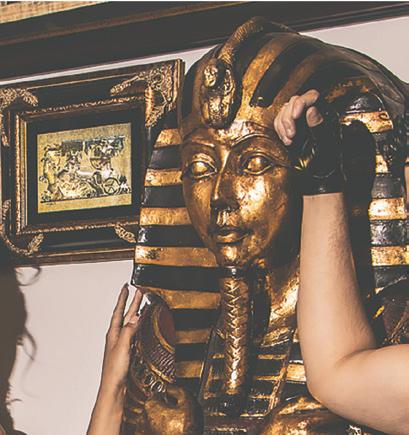
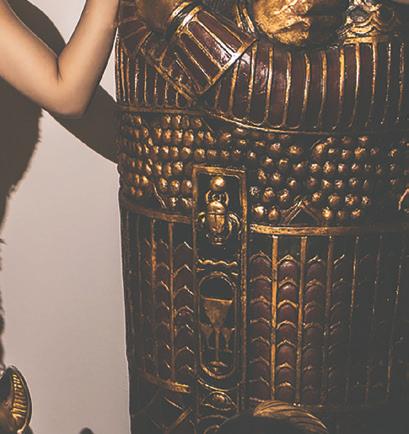
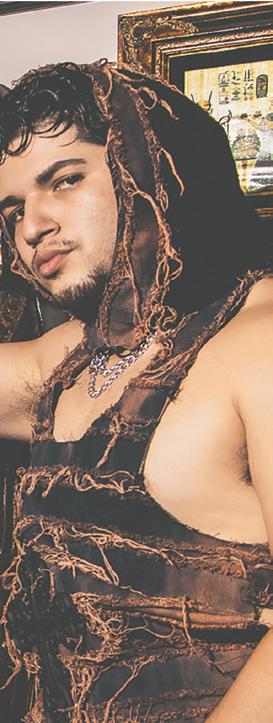

While the fashion show kept the same name, the second edition is all about life, change and rebirth. “I want the audience to experience living in the moment.” Walker said. Walker shared that the planning of a third edition is in the works and will have a celestial and cosmic theme.
For now, Walker’s and the other designers’ work will be on full display with the upcoming show as they celebrate life in their own artistic way, showing that from endings come new beginnings.




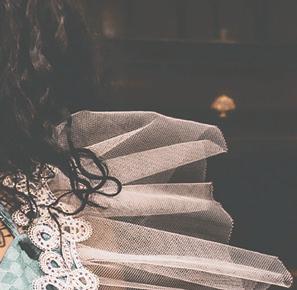






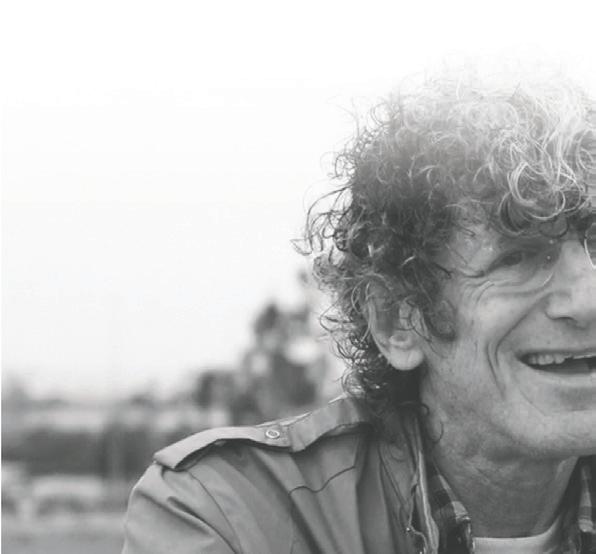
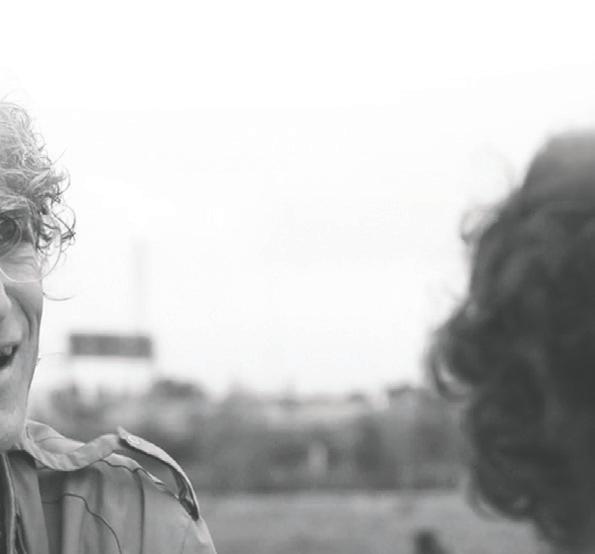
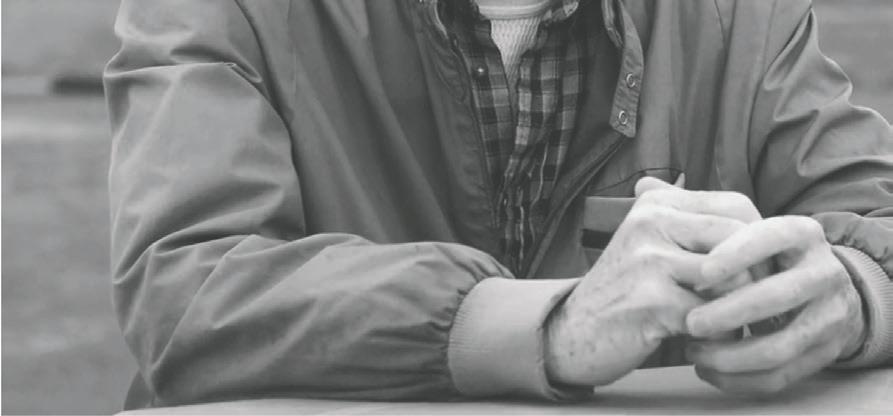
The 2025 El Paso Film Festival (EPFF) returned to the downtown area for its eighth year in cinematic fashion. This threeday event featured screenings of independent (indie) short and feature films from both local and international filmmakers, including special guest appearances by Kevin Smith and Lloyd Kaufman.
EPFF spanned multiple locations, with films, creative workshops and discussion panels at the Plaza Theatre, Philanthropy Theatre, El Paso Museum of Art (EPMA), El Paso Visitors Center and the Mexican American Cultural Center (MACC).
Founded in 2018 by artistic director and filmmaker Carlos F. Corral, EPFF has become an anticipated annual event for the El Paso community where creative minds come together to share their craft and to experience cinematic stories.
Meg Parker Wilson, a Dallasbased filmmaker whose own short film, “She,” was part of the festival’s selection, shared her appreciation for the EPFF.
“I’m so grateful for the creative vision of the group that started
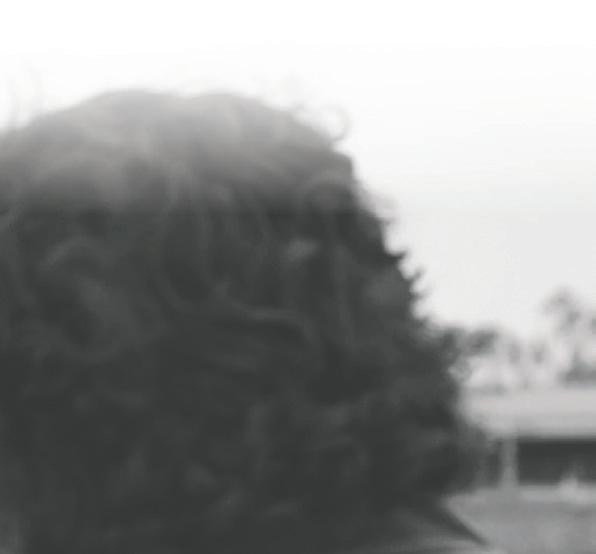
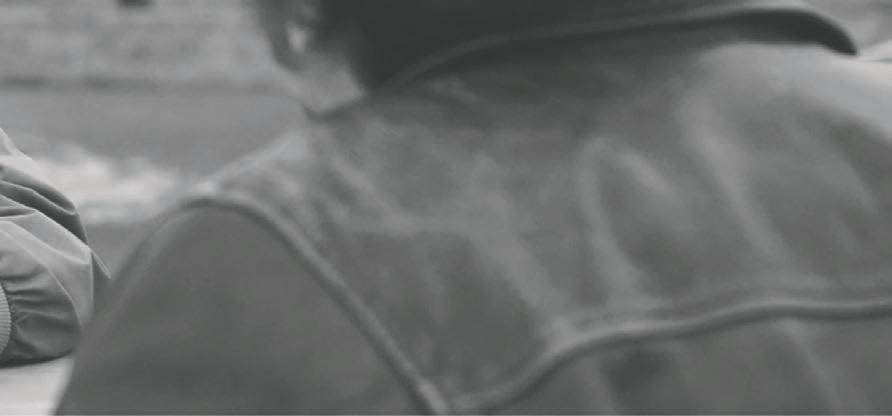
[EPFF]… because without a place to showcase art and work, where does it go?” Wilson said.
The festival kicked off on Sept. 25, at the Plaza Theatre with a selection of narrative shorts, including a dedicated screening of short films made by local El Pasoan filmmakers. Following the first of three VIP/ filmmaker receptions, part of the festival’s mix of ticketed and free events, audiences poured into the Kendall Kidd Performance Hall for guest speaker: Kevin Smith. Best known for directing the cult-classic indie films “Clerks,” “Mallrats,” “Chasing Amy,” and “Tusk,” as well as his portrayal of the character “Silent Bob,” Smith appeared on stage to share his recent life experiences and filmmaking advice, all in his
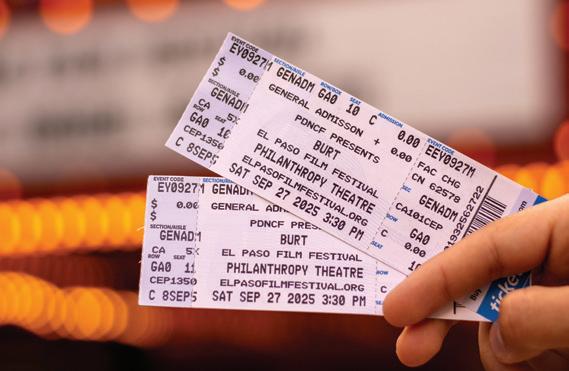
hallmark comedic style. As dozens of people lined up in the aisles for a Q&A segment, Corral and Smith welcomed another special guest to the stage.
Filmmaker Lloyd Kaufman, known for directing the 1984 indie superhero black comedy “The Toxic Avenger” and co-founding the longest-running indie film studio, Troma Entertainment, joined the others to share his experience with moviemaking. The night ended with a special screening of “The Toxic Avenger” afterward.
Day two began with free screenings of documentaries and student short films held at the EPMA. Meanwhile, the Visitors Center hosted six panel discussions, ranging from screenwriting and marketing tips to the new Texas Film Incentive Program. Lastly, the Philanthropy Theatre held showings of three feature films and “Late Night Shorts,” for El Paso’s night owls.
The festival’s final day ended with free admission to additional documentary and narrative features at the EPMA and MACC. The Philanthropy Theatre held two final panel discussions about women in film and actors’ advice... read MORE at theprospectordaily.com

XIMENA
CORDERO B Y
WEB & COPY EDITOR THE PROSPECTOR
While it may seem strange and unusual, people have long sought out the thrill of being frightened. From sudden jump scares to scenes of gore and psychological twists that leave people thinking once they walk out of the theater, horror films have become a part of the Halloween season.
Over the years, the genre has changed, but it has kept its ability to draw in audiences as according to data journalist Anna Fleck in research for Statistica, from 2023 to 2024, horror had the fifth highest viewership share in the U.S.
According to the New York Film Academy (NYFA), the first horror movie is widely believed to be “Le Manoir du Diable,” also known in English as “The Haunted Castle” or “The House of the Devil.” Directed by George Méliès in 1896, the three minute long film shows many of the clichés now associated with Halloween including cauldrons, animated skeletons, ghosts, transforming bats and the Devil.
While it may not be the horror that audiences know today, it laid the groundwork for films to come.
Over the decades, horror has shifted from tales of monsters and the supernatural to films that explore social issues and psychological tension. Modern films like Jordan Peele’s “Get Out” and “Nope” or Ari Aster’s “Midsommar” are examples of the genre’s expansion to commentary on society.
Even movies that stray from the psychological terror like “The Substance” created commentary on Hollywood’s beauty standards.
For Alejandra Casas, a senior psychology major, the shift has been one of the genre’s strengths.
good exploration of our fears as individuals and as a society,” Casas said. “I think it used to be more of just a fun, silly little goofy story to be scared for a bit, but now I‘m noticing that there‘s a shift, they have more of an artistic message behind them.”
Others like sophomore digital media production major, Paola Contreras, remembers being introduced to horror through older films. She also noticed how older films compare to the experience of today’s productions of horror movies.
“I was seven and my mom was watching ‘House of 1000 Corpses’ the movie by Rob Zombie, and she let me watch the first half of the movie,” Contreras said.
While Contreras is a fan of older horror movies, she shared that the changes in the genre make for better scares.
“There is more and better CGI (computer-generated imagery) in movies now and I think it makes movies now scarier,” Contreras said. “It makes it feel like we are there more, its more realistic even though it is supernatural.”
Not everyone agrees with that perspective, including Norma Gay, a freshman studying biochemistry who argues that the use of special effects has weakened rather than strengthened the genre.
“I don‘t like the feeling that you get because you feel scared even though what you‘re seeing is fake,” Gay said. “The graphics, it‘s definitely gotten a lot cheaper, they are just throwing effects in there.” Casas shared that aside from differences in style and technology, to them, the core of horror films remains the same as they give people the opportunity to confront their fears.
“It’s a nice way to let us experience fear and anxious emotions in an environment where we can...
“I feel like horror movies nowadays are a lot different from older horror movies… horror movies can be a really read MORE at theprospectordaily.com
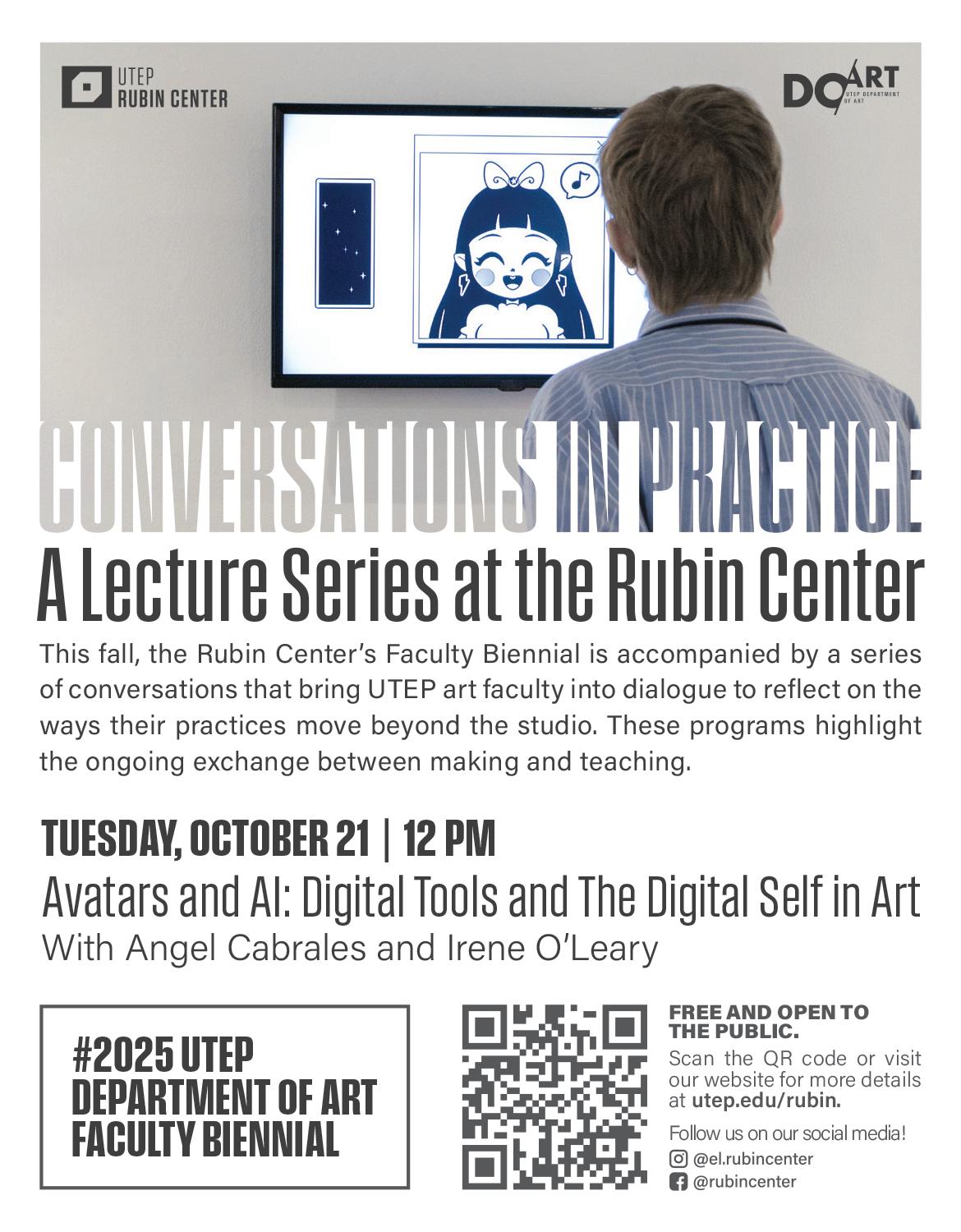
Have you read about the most incredible football season ever for the UTEP Miners?
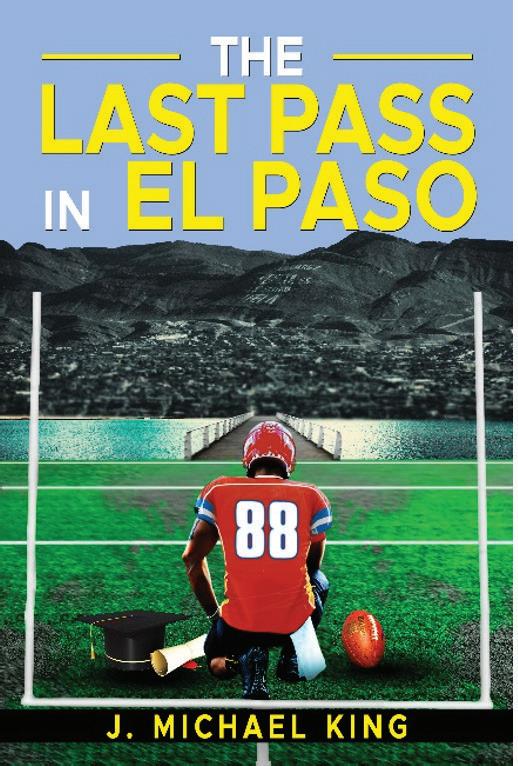
Check out the novel “The Last Pass in El Paso” available at amazon.com in eBook, Paperback, or Hardcover formats.
AYLINNE MORALES B Y
American scholar of Chicana feminism, cultural theory and queer theory, Gloria Anzaldúa, once wrote: “Alienated from her mother culture, ‘alien’ in the dominant culture, the woman of color does not feel safe within the inner life of her self. Petrified, she can’t respond, her face caught between los intersticios, the spaces between the different worlds she inhabits.”
In her writing, she often explored the idea of not belonging, not being enough as a borderland Chicana and being stuck between two worlds.
“Ni de aquí, ni de allá”. This is a phrase that is often used among Chicanos to describe the feeling of not fully belonging to a culture. Many say it can feel like they are walking two different paths. People who move from Mexico to the U.S., often describe it as leaving a piece of themselves behind, and sometimes they struggle with reconnecting with that part of themselves.
Folklore, or leyendas in Spanish, are one way for Chicanos to connect with and remember their cultural roots.
The popular franchise “Las Leyendas” has produced films such as “La Leyenda de la Nahuala” (2007) and “La Leyenda de la Llorona” (2011), as well as TV
shows like “Las Leyendas: El Origen” (2022) and “Las Leyendas de los Chaneques (2023). These pieces of media have become ubiquitous with Mexican culture and are the subject of memes, gifs and even merchandise. Because of their presence, they have also transcended to Chicano culture.
“La Leyenda de la Llorona” for instance, tells the tale of a woman who out of a fit of anger, drowns her children in a lake and is cursed to haunt the lake for eternity as she cries out, “¡Ay mis hijos!”. While it is a Mexican leyenda, it has evolved with and adapted to changing times and cultures.
Irma Montelongo, Ph.D., a professor in the Chicano Studies Department, said that the details of folklore can vary from community to community.
“Everybody knows the story of La Llorona, but it kind of changes, it kind of adapts to the community,” Montelongo said. “Maybe the Mexican community in Tusan knows the Llorona, but just a little bit differently than the way it is in El Paso. We adapt our folklore to our spaces.”
Chicanos and members of other communities, often take long-told tales with clear messages, such as La Llorona, El Cucuy and El Chupacabras, and give them their own spin. This allows them to keep their cultural roots, while also making it more relatable. For
example, the Llorona might now be said to cry in the Rio Grande rather than crying by a lake or another body of water.
Leyendas can also be a way for people to dream of something that was lost. For example, the mythical homeland of Chicanos, Aztlan folklore focuses on the idea that Chicanos have been in their land for far longer than people realize. Similar to the city of Atlantis, people speculate that Aztlan is located somewhere in the southwest. This leyenda is rooted in fact, since indigenous tribes were in the land of the United States long before colonizers came. So for Chicanos, Aztlan presents a way to stay connected with their ancestors.
“The antepasados, our raíces, our people are from this area. We have this connection to this area. This is where we come from. We’re not new to this region, we’ve always been here,” Montelongo said.
While the shock of biculturalism can sometimes leave Chicanos wondering who they are or where they belong. It is seen that folklore can ground and connect them to their Mexican heritage, serving as a reminder of the indigenous peoples they come from. Folklores serve as oral history, while people may never know if they are entirely true, there is truth within them.
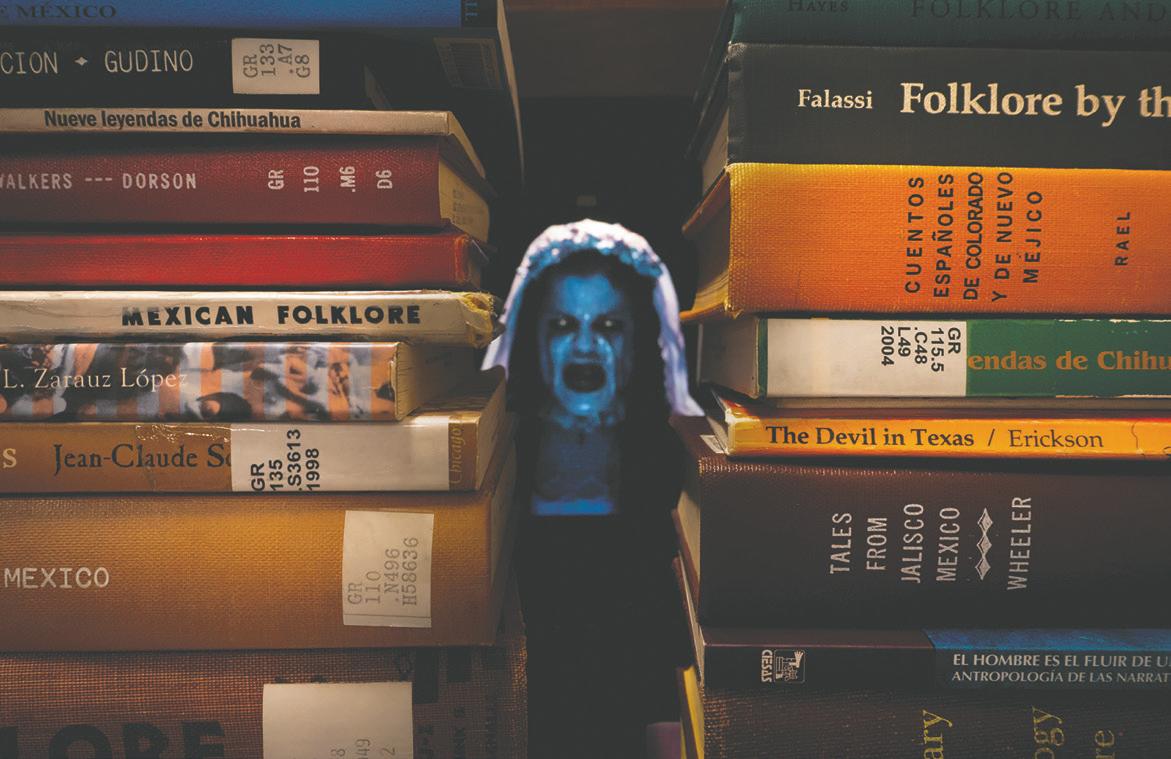
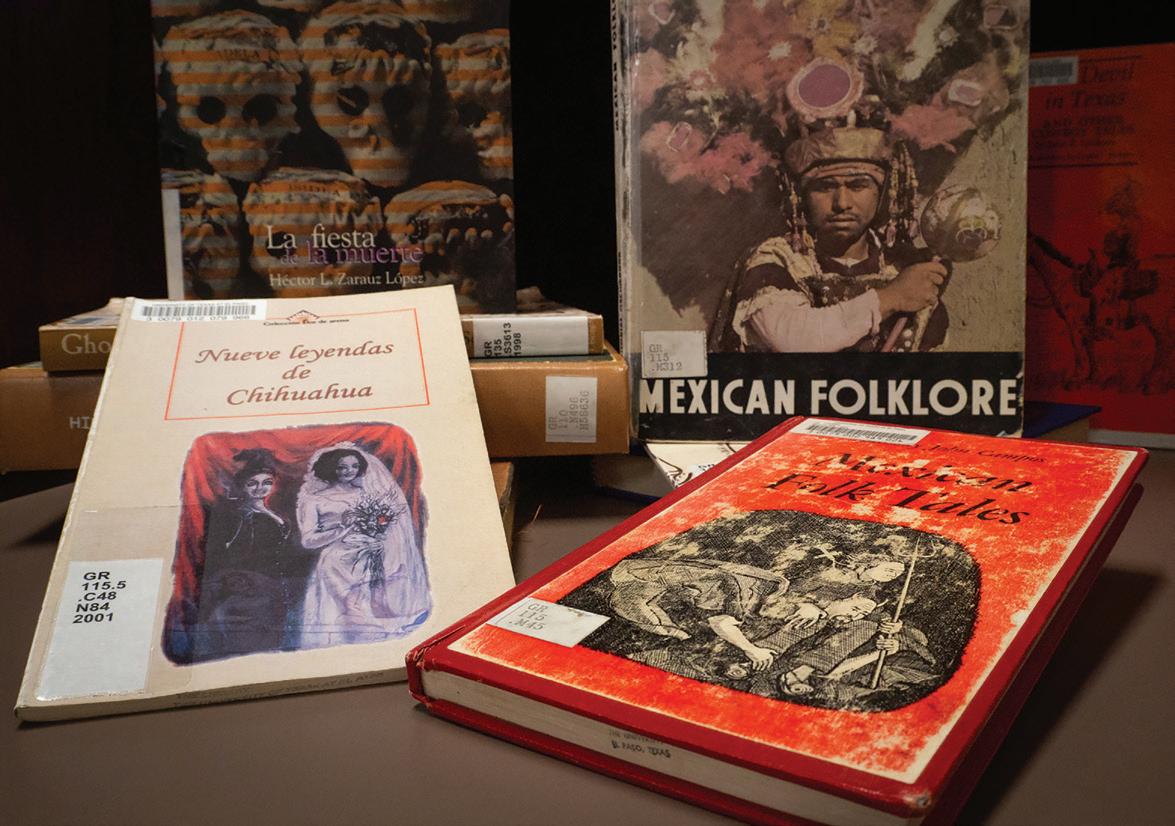

Kristian Hernandez, editor
Athletes from around the world come from different backgrounds and journeys. The decision to commit to a certain college can determine the future of their athletic careers even beyond collegiate sports. Out of the hundreds of universities in the nation, one begs to question what draws athletes to commit to being a Miner at The University of Texas at El Paso (UTEP).
Christalynne Sepulveda, a junior softball player for UTEP, has been part of the team ever since her freshman year.
An El Paso native who played softball at Americas High School, Sepulveda comes from an athletic family background.
“I feel like my family’s always been [a] very sporty family,” Sepulveda said. “I kind of saw it through my siblings too, and then that made me kind of like, wow, I want to do that. I started off looking up to my older sister to play softball.”
The plan to go to a division one school was not necessarily the first thing on her mind.
“I was just the kind of the type to just put my head down and work,” Sepulveda said. “I’ve been pretty set on UTEP for a while, so when I got the call, I was excited, and I committed pretty early.”
Her father was her travel coach and would be in communication with the scouts. He wouldn’t tell his daughter when the scouts were in attendance at her high school games so she would not feel nervous or scared.
Her UTEP visit felt familiar since she has lived in the El Paso area her whole life and attended Miner softball camps during her youth.
“It was nice, especially being from here, I already knew, the community and how supportive it is, even from our high school playoff run,” Sepulveda said. “That’s how I also knew I wanted to come here because of the community just going crazy.”
While athletes transferring to different colleges for a variety of reasons has become more prevalent, Sepulveda plans to stay with the Miners softball team.
“Some of the things keeping me here are community and culture,” Sepulveda said. “All the traditions here, the good food and the atmosphere. It makes it feel like home, so there’s nowhere else [I] want to be.”
Sepulveda’s goals for this season are to bat over .300, focus on one game at a time and help the Miners make the Conference USA tournament this season.
Ever since the NCAA adopted new rules regarding the transfer process, student athletes have acquired more agency when it comes to their future regarding
college sports.
Ndack Mbengue from Bergamo, Italy, is a senior forward for the UTEP women’s basketball team.
She began her college basketball career at Cowley College in fall 2022, which is part of the National Junior College Athletic Association (NJCAA), also known as JUCO.
While NCAA universities have four-year degree programs, JUCO institutions only have two-year programs, meaning most players only stay for a short time.
“It [Cowley College] was really good and then [I] stayed there for two years,” Mbengue said. “I think that’s the beauty of junior college. It’s about the people, not the place because it’s small schools in the middle of nowhere, but you really connect with the people, the fans.”
Mbengue had plans to go to a division one (D1) NCAA team, but she was not the only one with that goal at her junior college which created a competitive environment.
“It definitely gets competitive in JUCO because everybody wants to make it out of JUCO. Everybody wants to go play D1, that’s the goal for everybody,” Mbengue said. “You can’t do it on your own, you still need your teammates. And that’s why I love my JUCO team my sophomore year because we were like sisters. We played together and we just helped each other. We all wanted to get to the next level and, we just understood that you can’t do it on your own.”
Mbengue averaged 12.5 points per game and 10.4 rebounds per game with a field goal percentage of 53.8% her sophomore season.
She made the decision to enter the transfer portal in 2024. When thinking about the university she wanted to play for, Mbengue concerned herself with getting sufficient playing time and being at a university where she felt valued.
“The challenge was just having to talk to a lot of coaches,” Mbengue said. “You never know, they might not be honest, they’re just going to tell you what you want to hear. Coming to my visit [at UTEP], talking to Coach (Keitha) Adams, seeing all the other coaches as well. I just felt that it was genuine, and that’s why I chose UTEP.”
While Mbengue had her own journey coming from Italy to El Paso, fellow JUCO athlete Fuka Sekita comes all the way from Far East Asia.
Fuka Sekita is a junior libero for the UTEP volleyball team. Originally from Hyogo, Japan, she began playing volleyball at 10 years old. Sekita described her younger self as shy, but she was able to be part of a community that centered around the sport.
“Before I started playing volleyball, I wasn’t competitive,” Sekita said. “But after I started playing volleyball, I was getting to
be a competitive person.”
Despite a tough final 2022-23 season at Mukogawa Women’s University Senior High School, Head Coach Yoshitaka Yasutani was able to help Sekita build connections throughout the volleyball industry.
Sekita was offered the choice to play with the college that’s connected to her high school, but she was looking for other options for her future.
“I tried to go to the Army in Japan, but my mom was like ‘if you want to play volleyball, just play volleyball.’ So, I was like, ‘okay,’” Sekita said.
Sekita committed to New Mexico Military Institute (NMMI), a JUCO school. She described the school as strict and routine.
“We have to wake up at 6 a.m., and then go to formation, eat breakfast, then we had a class from 8 a.m. to 2 p.m., after that we had practice for two hours, three hours,” Sekita said. “It was hard my freshman year, but my sophomore [year] was really fun.”
American volleyball and the culture were different to what Sekita was accustomed to in Japan.
“A lot of hitters can hit straight down and the ball is so heavy. So, I have to adjust every skill,” Sekita said. “In the United States, everybody just [has an] open personality. But in Japan, you have to respect older people. When I was a freshman, I was kind of struggling to get conversations with older people, like the [volleyball] girls.”
Sekita says she has been able come out of her shell and express her emotions here in the U.S. Her family in Japan, especially her mother noticed she has changed in a positive way.
She was the captain of the NMMI volleyball team her sophomore year. Even with the minor language barrier, she was able to have a great relationship with her teammates and coaches.
Entering the transfer portal, going to a division one school was the main goal because Sekita plans to play professionally after college.
“I told my coaches ‘I’m going to go D1,’” Sekita said.
Sekita visited the University of Louisiana Lafayette, Virginia Commonwealth University along with UTEP, which she had been visiting since her freshman year. UTEP volleyball Head Coach Ben Wallis told her the team needed a libero for the 2025 season. Playing for a competitive team like the Miners was a main factor.
“I need to come to UTEP. You know, there’s no reason I say ‘no’ because I knew that they’re really good,” Sekita said.
Watching from afar and now on the team, Sekita has been able to connect well with fellow teammates such as senior outside/rightside
hitter Sara Pustahija and junior setter Alexis Massey.
Moving forward, Sekita is looking to get the Miners back into the national tournament, become champions of Conference USA and become a professional player.
Although these student-athletes all chose to play for their respective UTEP athletic programs, no journey was the same, showing the diverse desires that shape their futures in and out of the game.
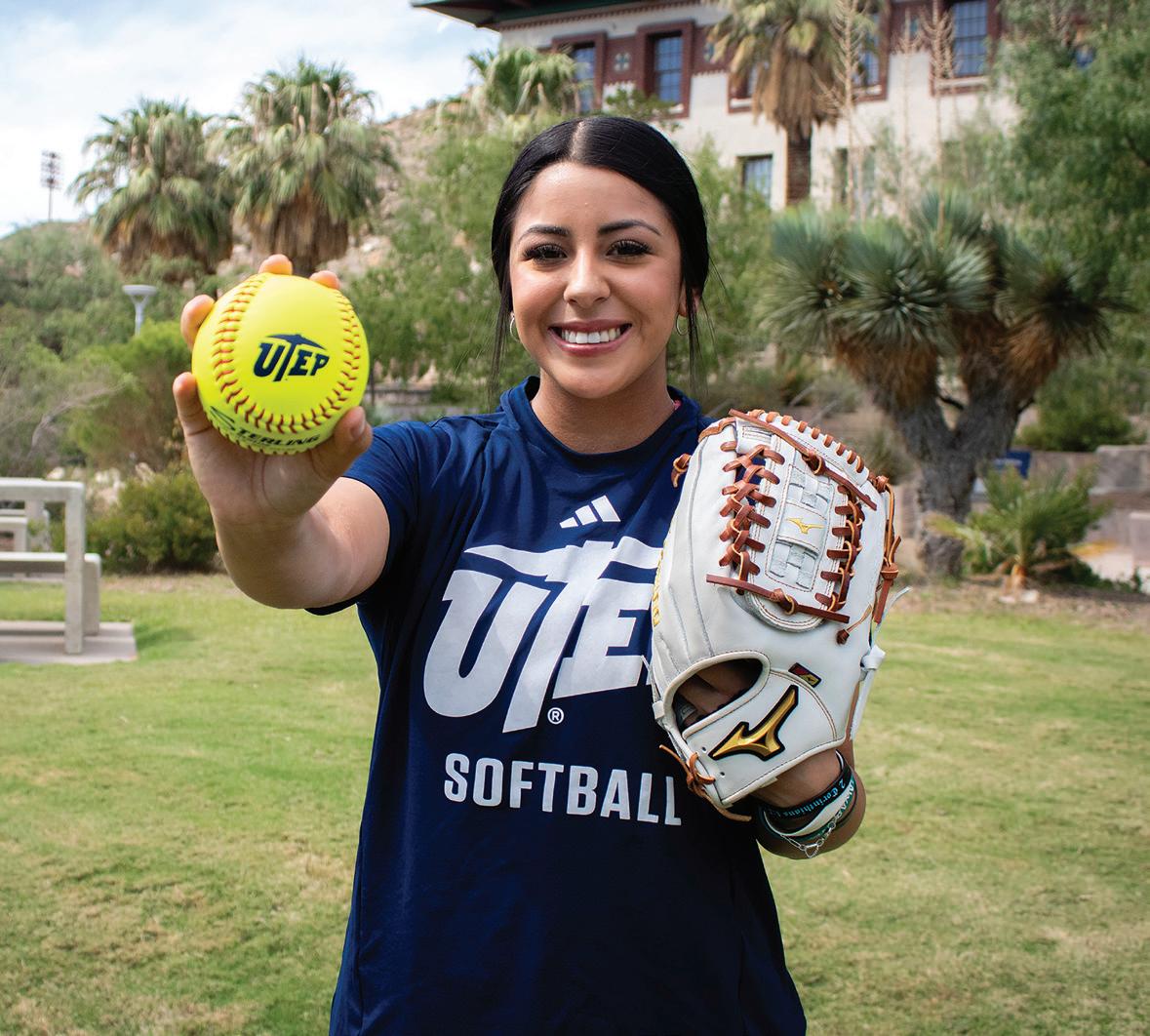
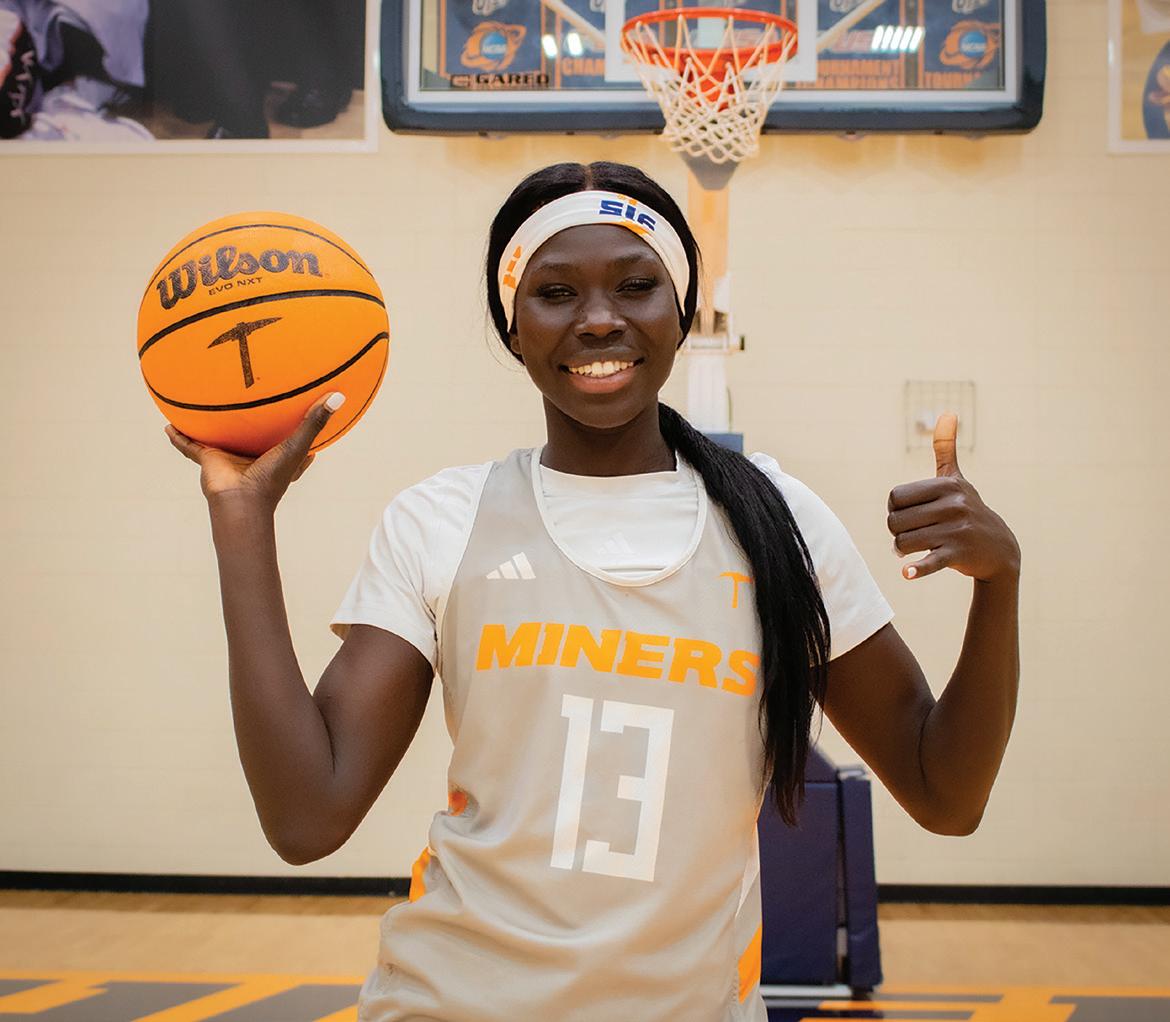

Dallas native Savanah Finley has stepped confidently into the starting goalkeeper role for The University of Texas at El Paso (UTEP), already earning recognition in Conference USA (C-USA) on Sept. 2 during her
freshman season.
Finley has made an immediate impact for the Miners, starting all 13 matches so far, and logging 1,170 minutes in goal. She has recorded 44 saves and four shutouts, showing her adjustment to the pace of college soccer. Her poise and consistency

have quickly made hera reliable presence on the back line earning her C-USA Goalkeeper of the Week honors on Sept. 9 after a standout away game. The highlight was a 1-0 victory over Boise State, the defending Mountain West champion, in which she made five crucial saves which preserved the clean sheet.
For Finley, UTEP was always close to home. Raised in Dallas, Finley followed in the footsteps of both her parents, who wore Miner orange. The chance to continue that family tradition was hard to pass up.
“My parents both went here and my dad played sports here. I’ve always grown up knowing UTEP,” Finley said.
The decision to attend UTEP was solidified after Miner coaches reached out to her following a showcase event.
“I love UTEP, [I’m] in love with El Paso and the atmosphere of the team was great when I came on a visit,” Finley said.
Finley’s path to goalkeeping began when she was 10 years old, marking the start of her journey in net.
“I just started growing higher than anyone else, and my brother was a goalkeeper. He inspired me a lot,” Finley said.
Even in her first season, Finley has taken on leadership responsibilities. From the goal area, she directs the back line, calls out assignments on
Savanah Finley is the starting freshman goal keeper on the UTEP soccer team.
Photo by Sadie Briones/ The Prospector







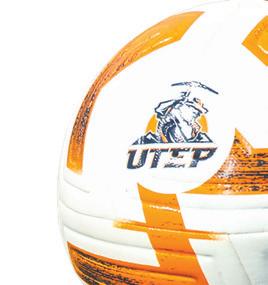
set pieces and makes sure defenders stay organized.





As the last line of defense, she views communication as essential.

“Communication on the field is super important,” Finley said. “I would like to see myself as a leader on the field.”
Her Boise State performance remains a signature moment of her early career.
“I had to be on my toes the whole game,” Finley said. “It was such a competitive game … my defense did a great job, especially in the second half, keeping them out of the dangerous areas.”
Finley has completed four shutouts in eight games, while UTEP freshman goalkeeper Emily Parrott completed the same amount in 12 games in 2019.
Finley has faced some challenging matches including a 4-1 loss against Arizona State. This setback served as a reminder for Finley of the work still ahead of her.
“It grounds me back to why I’m


here,” Finley said. “It shows that we have more to give.”
Finley contributes to the Miners’ chance at their first C-USA tournament berth in three years. She is determined to play a central role in that push and has long-term goals as well.
“I want to be a leader here,” Finley said. “Hopefully, in my later years, be a captain and lead the team, and grow the culture that has been built in the last three years.”
With her combination of athleticism, composure and dedication, Finley positions herself to make her mark and become the leader she strives to be in the UTEP soccer program.




On Sept. 28, 850 runners were dressed in purple and gold in support of those fighting childhood cancer. In the annual Royal Run for Hope, runners ran either a 1km or a 5km, with all earnings being donated to families currently battling childhood cancer.
Sisters Martha Martinez and Christina Mireles watched their mother fight her own battle with cancer. When they realized there were no local events supporting childhood cancer, they decided to create one. With support from friends, the Royal Run for Hope was born.
According to the Cure Search research organization, 17,000 children in the U.S. and 300,000 globally are diagnosed with cancer. Martinez and Mireles wanted to provide not just financial assistance, but also a sense of solidarity for affected families.
“We wanted to give back to the community, and we came up with the idea to run a 5km [marathon],” Martinez said. “Now it has been 14 years of this tradition.”
Throughout the years, the event has grown uniting people from all over El Paso with the support of sponsors, ambassadors, vendors, committee members, entertainers and volunteers.
From promoting the event online to dancing on the sidelines to helping distribute water to the runners, volunteers and people helped support the cause. The event’s partnership with Buick House also ensured 100% of the profit goes to El Paso children battling cancer.
“We started out with 125 runners, today we have 850,” Martinez said.
“The best part of it is knowing that all this is getting back to the community, to the children who are fighting and their families.
Knowing they are all in this together, and seeing it out here in their faces, is like a reward on its own.”
The race also offers emotional support as many attendees are there to cheer on their family, friends and neighbors. Among them were Amy Kasuki and Deborah Vega, both dressed in purple puffy skirts as they ran the 1k race.
“We are here to support our coworker and for awareness of his daughter Mia who passed away,” Kasuki said.
According to the American Cancer Organization, battling cancer can make the patients feel isolated and lead to mental health struggles. Studies have demonstrated that emotional support from the community can be very impactful.
“Cancer hits everywhere and El Paso is no exception,” Vega said. “For any community we must support where we can and just show that we care.”
The atmosphere was filled with excitement and adrenaline as viewers waited for the first person to cross the finish line. What mattered to many runners was not who crossed first, or who ran faster, but the fact that they were all in the run together.
Dorian Villegas, a marathon enthusiast and winner of the 5km race, believes running is about more than a passion for the sport.
“I’m here today because I never miss this 5km, it‘s for a great cause too,” Villegas said, “Here as the El Paso community, we come together as one.”
For the Royal Run for Hope, the meaning of the event has always gone beyond finish times. Each step is a reminder that no one fights alone, and that together it is possible to spread hope.
